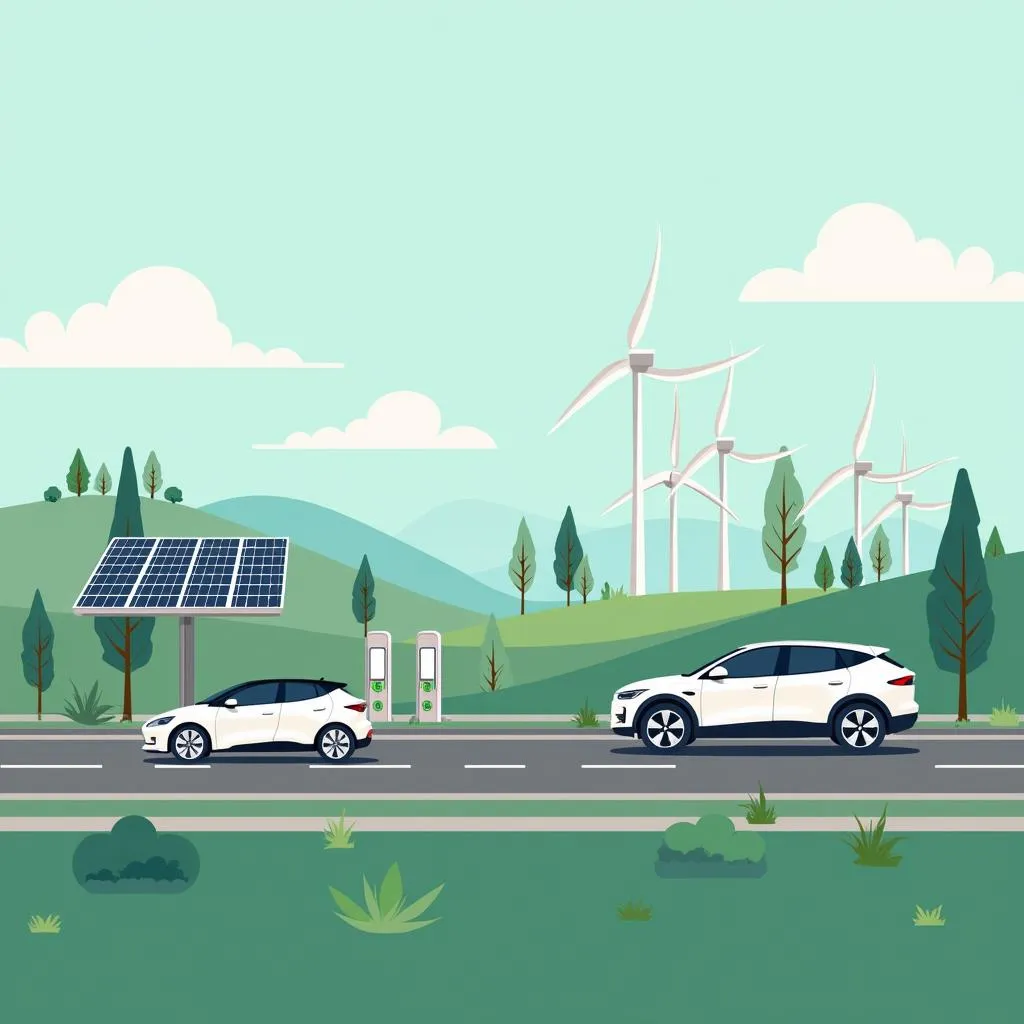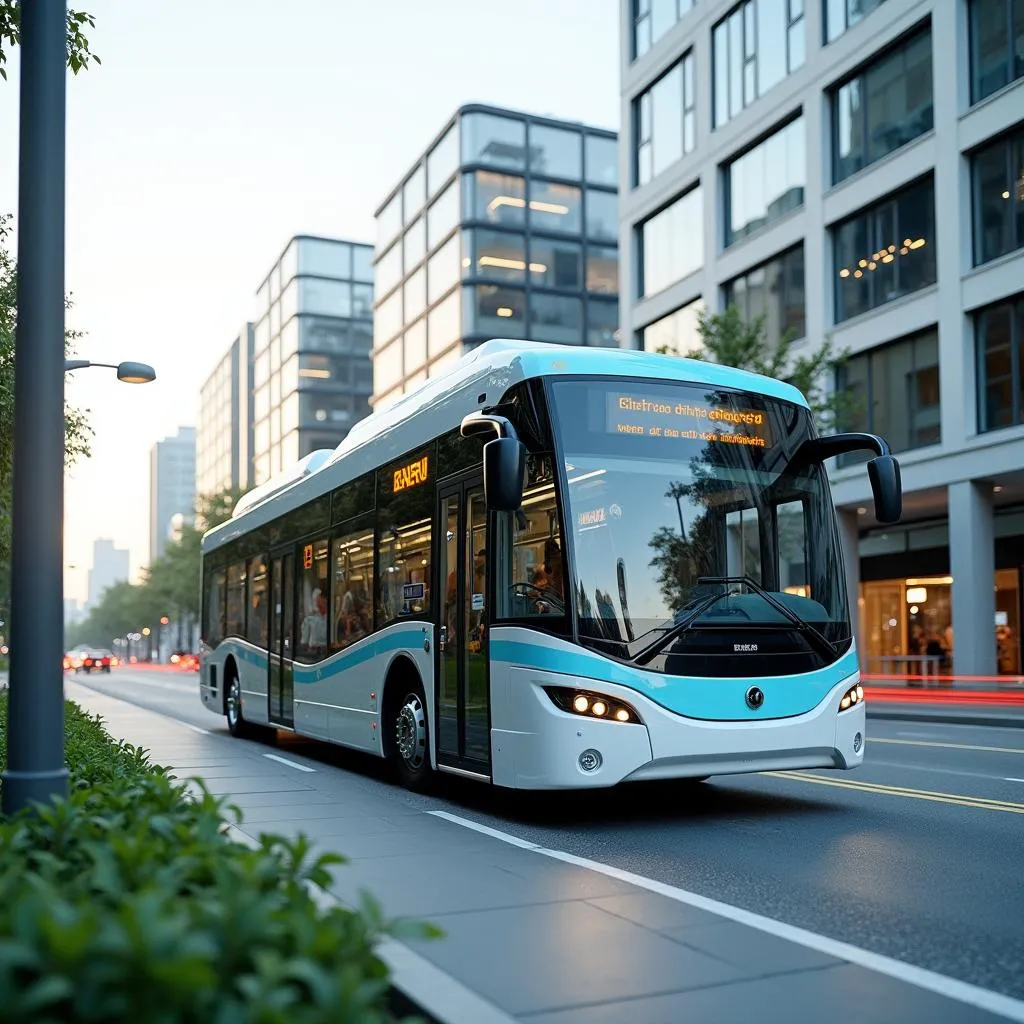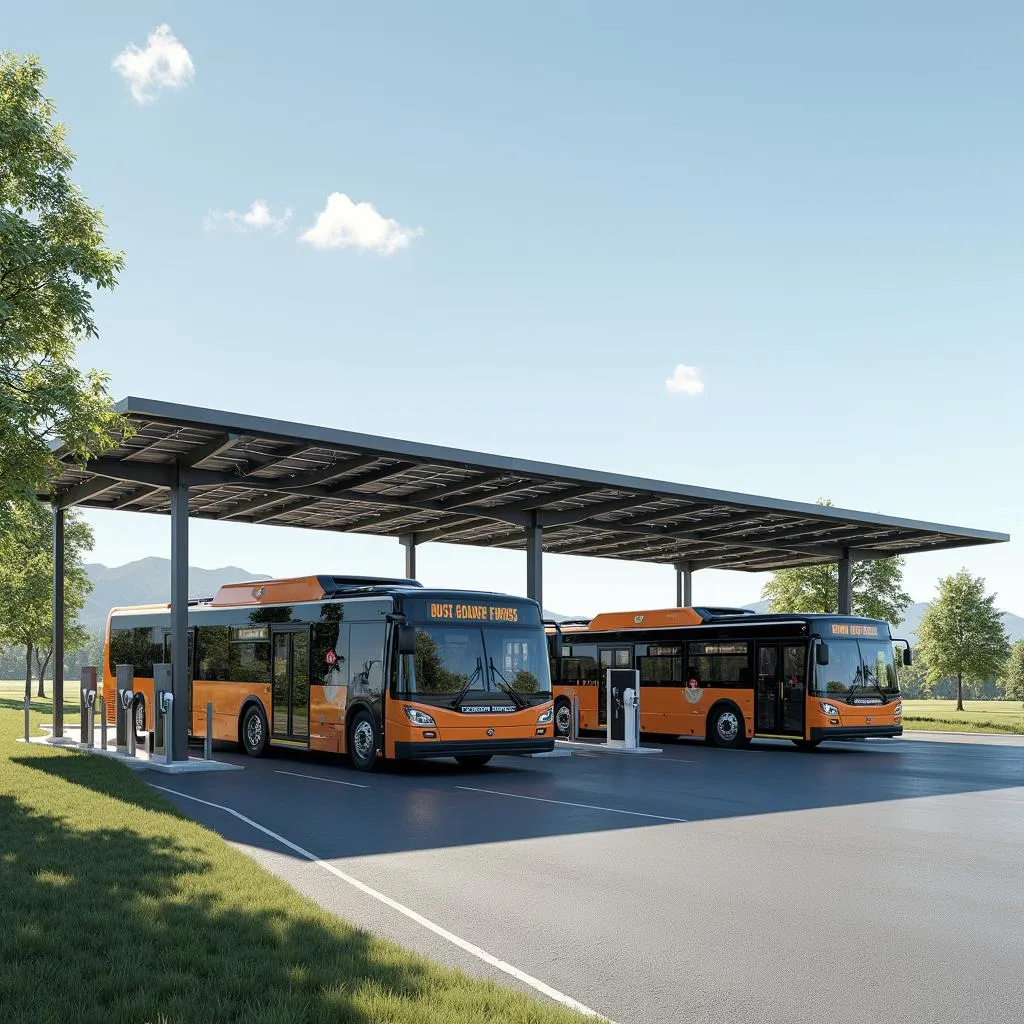In the PTE Academic Exam, the Summarize Written Text section within the Speaking & Writing module frequently involves current issues, such as renewable energy’s vital role in transportation systems. Below, you will find various summarized text exercises centered around how renewable energy is being integrated into modern transportation systems. This is an essential topic as it not only aligns with global trends but also makes for a compelling practice for the PTE test.
Summarize Written Text Practice with Renewable Energy in Transportation Systems
Task Guidelines:
- Your task is to summarize the given text in one sentence.
- Include the main points and do not exceed 75 words.
Practice 1: Role of Renewable Energy in Modern Transportation
Prompt:
The transportation sector is undergoing a significant change due to the rise of renewable energy sources. Traditional vehicles powered by internal combustion engines are slowly being replaced by electric vehicles (EVs) and hydrogen-powered cars. Solar panels and wind-powered energy stations are providing sustainable alternatives for charging EVs, while research continues on developing more efficient renewable energy solutions. The future of transportation is moving towards more sustainable energy sources, reducing carbon emissions and pushing towards greener cities.
Summarize the text in one sentence.
Answers:
-
Band 90:
Renewable energy is transforming the transportation sector, with electric vehicles and hydrogen-powered cars increasingly replacing traditional fossil fuel engines, while solar and wind energy is driving sustainable infrastructure for a greener future.Analysis:
- Content: Comprehensive coverage of key points.
- Form: One sentence, less than 75 words.
- Grammar: No issues.
- Vocabulary: Strong use of advanced terms like “transforming,” “sustainable,” and “infrastructure.”
- Spelling: No mistakes.
 Renewable energy transforming transportation with electric vehicles and hydrogen cars
Renewable energy transforming transportation with electric vehicles and hydrogen cars
-
Band 70:
Renewable energy is changing transportation with electric and hydrogen-powered vehicles replacing traditional cars, and new sources like solar and wind energy helping reduce emissions.Analysis:
- Content: Covers most of the main ideas, but slightly simplified.
- Form: Single sentence, within word limit.
- Grammar: Correct but less complex structure.
- Vocabulary: Adequate but less formal.
- Spelling: No issues.
-
Band 50:
Renewable energy is making cars like electric and hydrogen-powered and help reduce pollution while using solar and wind energy for charging stations.Analysis:
- Content: Key points are addressed but with vague clarity.
- Form: Single sentence but clumsily structured.
- Grammar: Issues with tense and prepositions.
- Vocabulary: Moderate use of terms but lacks cohesion.
- Spelling: No mistakes.
Practice 2: Future of Green Transportation
Prompt:
The global push towards reducing carbon emissions has placed the transportation sector centerstage in the renewable energy revolution. Several initiatives have focused on electrifying public transport, including buses and trains, thereby reducing cities’ reliance on fossil fuels. Additionally, hydrogen fuel cells and biofuels are being tested as alternative solutions for long-haul transportation. This shift is important in achieving sustainable urban development and paving the way for renewable energy integration into cities worldwide.
Summarize the text in one sentence.
Answers:
-
Band 90:
In an effort to reduce global carbon emissions, many cities are transitioning to renewable energy solutions such as electrified public transport, hydrogen fuel cells, and biofuels, promoting sustainable urban development.Analysis:
- Content: Key ideas including electrified transport, hydrogen, and biofuels are condensed effectively.
- Form: Perfect sentence structure and within word limit.
- Grammar: Complex but correct use of clauses.
- Vocabulary: Excellent use of formal language.
- Spelling: Flawless.
-
Band 70:
Public transport is shifting to renewable energy with electric buses and trains, using hydrogen and biofuels to reduce carbon emissions in cities and help sustainability.Analysis:
- Content: Covers core ideas but less detailed.
- Form: Sentence length appropriate.
- Grammar: Simple and grammatically correct, but lacks sophistication.
- Vocabulary: Moderately advanced terms.
- Spelling: No mistakes.
 Public transport using renewable energy including electric buses and hydrogen sources
Public transport using renewable energy including electric buses and hydrogen sources
-
Band 50:
Cities are using electric and hydrogen power in transport to reduce carbon and help the environment grow better.Analysis:
- Content: Main idea present but overly simplified.
- Form: Sentence has a childish structure.
- Grammar: Issues with coherence and clarity.
- Vocabulary: Basic vocabulary with some confusion in word choice.
- Spelling: Correct.
Practice 3: Integrating Renewable Energy in Public Transportation
Prompt:
Renewable energy technologies are being integrated into public transport systems to decrease reliance on fossil fuels and reduce greenhouse gases. Projects such as electric buses, solar-powered charging stations, and hydrogen-based trains are becoming increasingly widespread. These technologies not only decrease operating costs in the long run but also significantly lessen the environmental impact associated with conventional fuel use, making renewable energy a practical solution for sustainable urban expansion and smart city development.
Summarize the text in one sentence.
Answers:
-
Band 90:
The integration of renewable energy technologies like electric buses, solar charging stations, and hydrogen trains into public transportation is reducing reliance on fossil fuels and promoting sustainable urban growth.Analysis:
- Content: Captures core ideas succinctly while maintaining clarity.
- Form: Sentence follows PTE guidelines.
- Grammar: Well-formed sentence with no errors.
- Vocabulary: Outstanding utilization of academic vocabulary.
- Spelling: Perfect.
-
Band 70:
Cities are using electric buses, solar energy, and hydrogen trains in public transport to reduce their fossil fuel use and environmental damage.Analysis:
- Content: Covers key ideas but lacks finer detail.
- Form: Sentence length is appropriate.
- Grammar: Spot on.
- Vocabulary: Adequate.
- Spelling: No errors.
 Integration of solar-powered charging stations in public transport systems
Integration of solar-powered charging stations in public transport systems
-
Band 50:
Public transport is using renewable energy in buses and trains to cut down on fossil fuels.Analysis:
- Content: Quite simplistic, missing some important details.
- Form: Shorter than needed.
- Grammar: Basic structure.
- Vocabulary: Weak selection of terms.
- Spelling: Correct.
Vocabulary and Grammar Focus
Here are 10 essential terms from this topic, along with their meanings and examples of use:
-
Sustainable /səˈsteɪ.nə.bəl/ (adj.): Able to be maintained at a certain rate or level.
- Sustainable transportation aims to reduce the environmental impact.
-
Emissions /ɪˈmɪʃ.ənz/ (n.): The release of gases such as carbon dioxide into the atmosphere.
- Electric vehicles help lower carbon emissions significantly.
-
Electrify /ɪˈlek.trə.faɪ/ (v.): To power with electricity.
- Many cities are electrifying their bus systems to reduce pollution.
-
Biofuels /ˈbaɪ.oʊˌfjuː.əlz/ (n.): Fuel derived from living organisms.
- Biofuels provide an alternative to fossil fuels for long-distance transport.
-
Hydrogen fuel cell /ˈhaɪ.drə.dʒən/ (n.): A device that creates electricity by combining hydrogen and oxygen.
- Hydrogen fuel cells are being explored for heavy-duty vehicles.
-
Integrate /ˈɪn.tɪ.ɡreɪt/ (v.): To combine one thing with another.
- Public transport systems are integrating renewable energy sources.
-
Conventional /kənˈven.ʃən.əl/ (adj.): Based on what is traditionally used.
- Conventional engines are being replaced by electric alternatives.
-
Infrastructure /ˈɪn.frəˌstrʌk.tʃər/ (n.): The basic equipment and structures needed for a system.
- Solar-powered infrastructure is vital for sustainable cities.
-
Greenhouse gases /ˈɡriːn.haʊs ˌɡæs.ɪz/ (n.): Gases that contribute to the greenhouse effect by trapping heat.
- Reducing greenhouse gases is a major goal of renewable energy use.
-
Revolution /ˌrev.əˈluː.ʃən/ (n.): A dramatic and wide-reaching change.
- The renewable energy revolution is reshaping transportation systems globally.
Conclusion
Renewable energy is an essential focus in PTE Summarize Written Text exercises, especially when discussing sustainable transportation systems. Practicing with the above examples can pave your way toward higher scores as these topics are highly relevant in real-world exams. Don’t forget that honing your skills in summarization is key. Continue exploring related topics such as Renewable energy integration into cities and Renewable energy storage technology development to build a broader understanding!